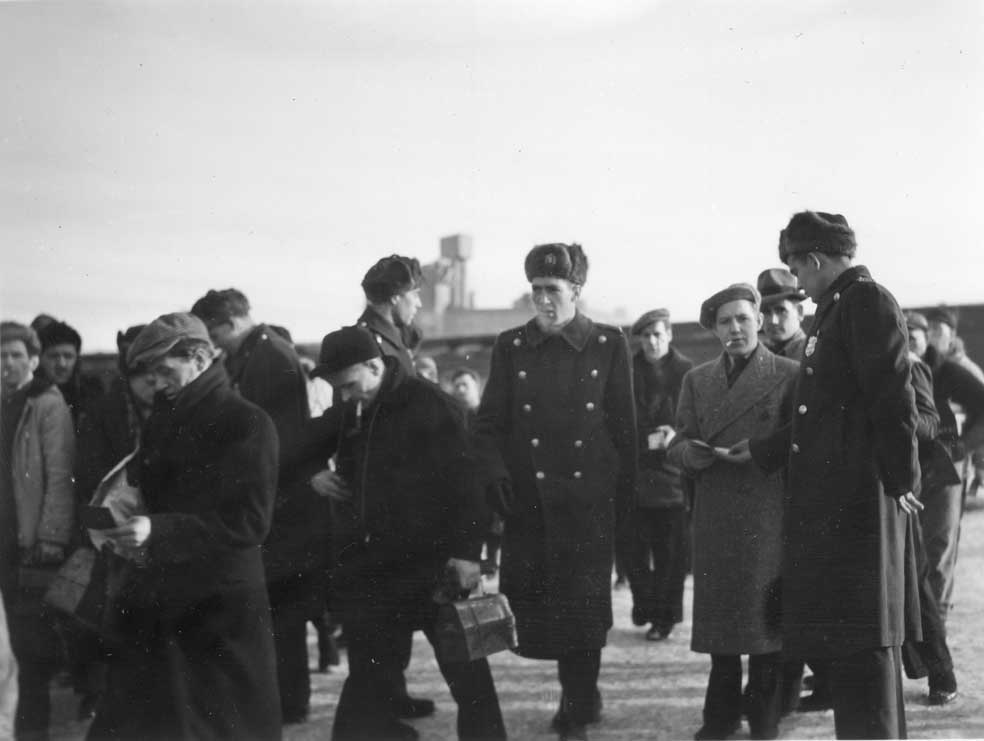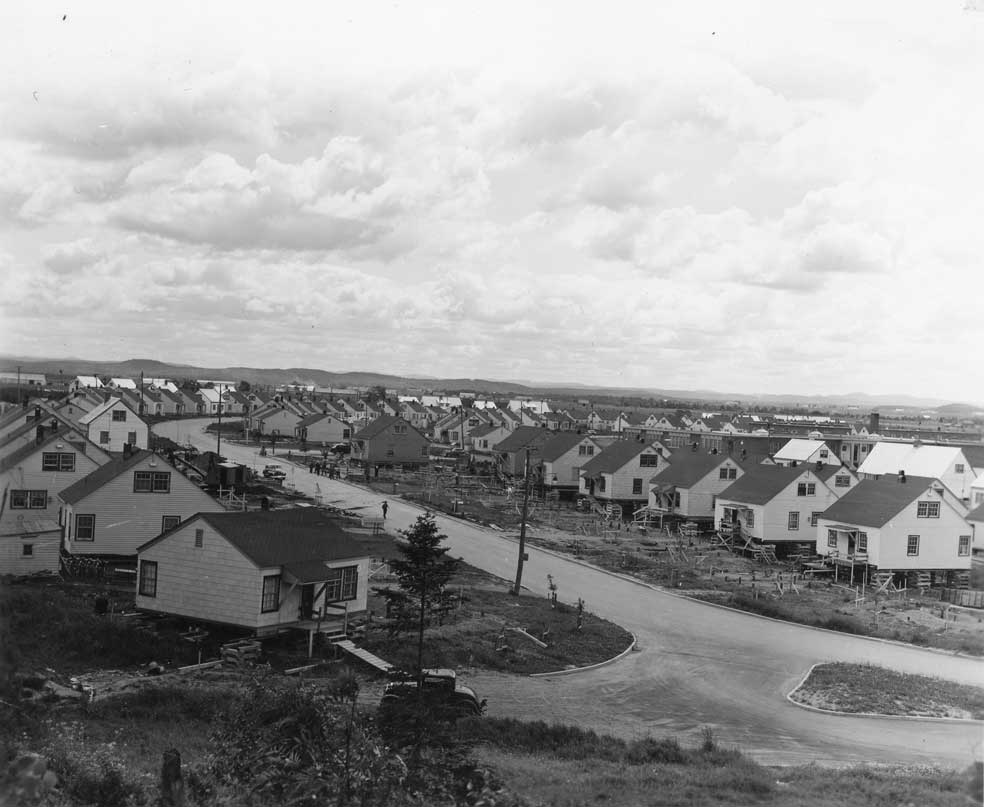The war effort leads Arvida to reach a state of comprehensive development
The integration of the various stages of aluminum production not only contributed to the model city’s distinction, it allowed the Arvida plant to rise to the top of the WWII production by providing the Allied war effort a great portion of the aluminum needed as well as 90 % of the Commonwealth’s production. Arvida then became a “secret city”, protected by an extensive contingent of men and weapons. Declared a “wartime industry” by the Government of Canada, the aluminum production complex became the site with the highest level of military defence in the country. An anti-aircraft battery was set up in Arvida; 16 Bofors guns, eight 3.7-inch (94 mm) guns, four 3-inch guns and 3000 soldiers were deployed.
While maintaining its role in regional development, notably by prompting the construction of the Bagotville military base, the utopia of the 1920s experienced a significant growth in the 1940s, with industrial production exceeding 340,000 tons, as anticipated by its initial design. In 1942, the Arvida aluminum plant is the largest in the world. It maintained its position as the world's largest aluminum producer for over three decades.
|
Military camps and soldiers in Morritz Park, circa 1940. |
This large-scale industrial development attracted scores of workers requiring housing. In this regard, Wartime Housing Limited built more than 500 houses, designed for assembly in record time. They were constructions of minimalist nature, single-family structures built on cedar pillars. The framework, roofs and walls are pre-cut; prefabricated in “panels”, these houses are easily “disassembled” for further use on other sites, as needed. Having to house its employees, the aluminum company, undoubtedly interested in conserving, or even developing a dense image of the city of aluminum, acquires most of them. In 1949, it proceeds with lifting the houses and placing them all on concrete foundations, thus making them permanent.
|
Arvida’s Wartime houses being permanently installed on foundations, by Alcan. |





 Official City of Saguenay website
Official City of Saguenay website